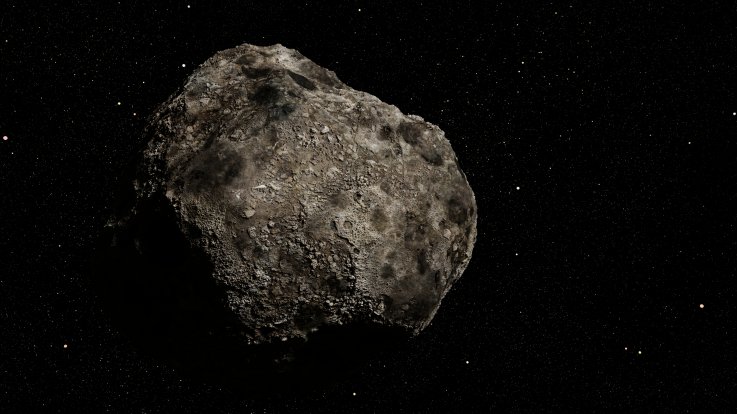Tomorrow, a giant asteroid measuring up to 2,034 feet in diameter will speed safely past Earth at around 17,800 miles per hour.
The space rock—dubbed 481394 (2006 SF6)—will make its close approach at 7:01 p.m. EDT on November 20 when it will come within around 2.7 million miles of our planet, or about 11 times the Earth-Moon distance, according to NASA's Center for Near Earth Object Studies (CNEOS.)
The space rock was first discovered on September 17, 2006 by the Catalina Sky Survey—an astronomical project designed to look for asteroids and comets managed by scientists at the Steward Observatory near Tucson, Arizona.
The space rock's last close approach to Earth took place in February this year. And the next one will occur in November 2020.
"Regarding the future, over the next 200 years this asteroid will not approach closer than it will this month," Paul Chodas, manager of the CNEOS at NASA's Jet Propulsion Laboratory, told Newsweek.
Asteroid 481394 (2006 SF6) is considered to be a near-Earth object (NEO) because its path around the sun takes it within 121 million miles of the star and 30 million miles of our planet's orbit. Some of these NEOs—the vast majority of which are asteroids—are further defined as "potentially hazardous" if they have certain characteristics.
"A near-Earth asteroid is considered 'potentially hazardous' if its orbit approaches the Earth's orbit to within approximately 4.6 million miles, or about 19 lunar distances, and its size is greater than roughly 140 meters [around 460 feet,]" Chodas said.

Despite the fact that 481394 (2006 SF6) is classed as potentially hazardous, projections show that it has no chance of striking the Earth in the next two centuries or so. This is fortunate because if such a collision did occur it could cause widespread devastation.
"It is extremely unlikely that an asteroid the size of 2006 SF6 would impact the Earth anytime soon," Chodas said. "Should such a scenario occur, the impact would result in continental-scale devastation. It would not reach a global catastrophe/mass extinction level event—the event that killed off the dinosaurs was the result of a much larger impact."
Currently, we know about roughly 25,000 NEOs larger than 460 feet in diameter with Chodas noting that we have discovered about 35 percent of the total figure.
"But if you count everything larger than 10 meters [33 feet] in size, the total population goes up to something like 100 million, of which we have discovered only a tiny fraction of a percent," Chodas said. "For potentially hazardous asteroids (PHAs), the total population is estimated to be about 5,000."
According to Walter Freeman, a physicist from Syracuse University's College of Arts and Sciences, asteroids are mostly debris left over from the early solar system.
"They are time machines, of a sort," Freeman said in a statement provided to Newsweek. "In the first hundred million years of its life, most of the material in the early solar system accumulated into the growing planets, as smaller pieces of material collided with them. But not all of them found their way into the planets; some are still around. These asteroids remind us how the planets were born and shaped—and remind us that, four and a half billion years later, the solar system is still slowly changing."
"Planet" - Google News
November 20, 2019 at 12:46AM
https://ift.tt/32V0xYA
Enormous Asteroid Measuring More Than 2,000 Feet Wide to Whizz Past Our Planet Tomorrow - Newsweek
"Planet" - Google News
https://ift.tt/2Qdey0Y
Shoes Man Tutorial
Pos News Update
Meme Update
Korean Entertainment News
Japan News Update
Bagikan Berita Ini















0 Response to "Enormous Asteroid Measuring More Than 2,000 Feet Wide to Whizz Past Our Planet Tomorrow - Newsweek"
Post a Comment